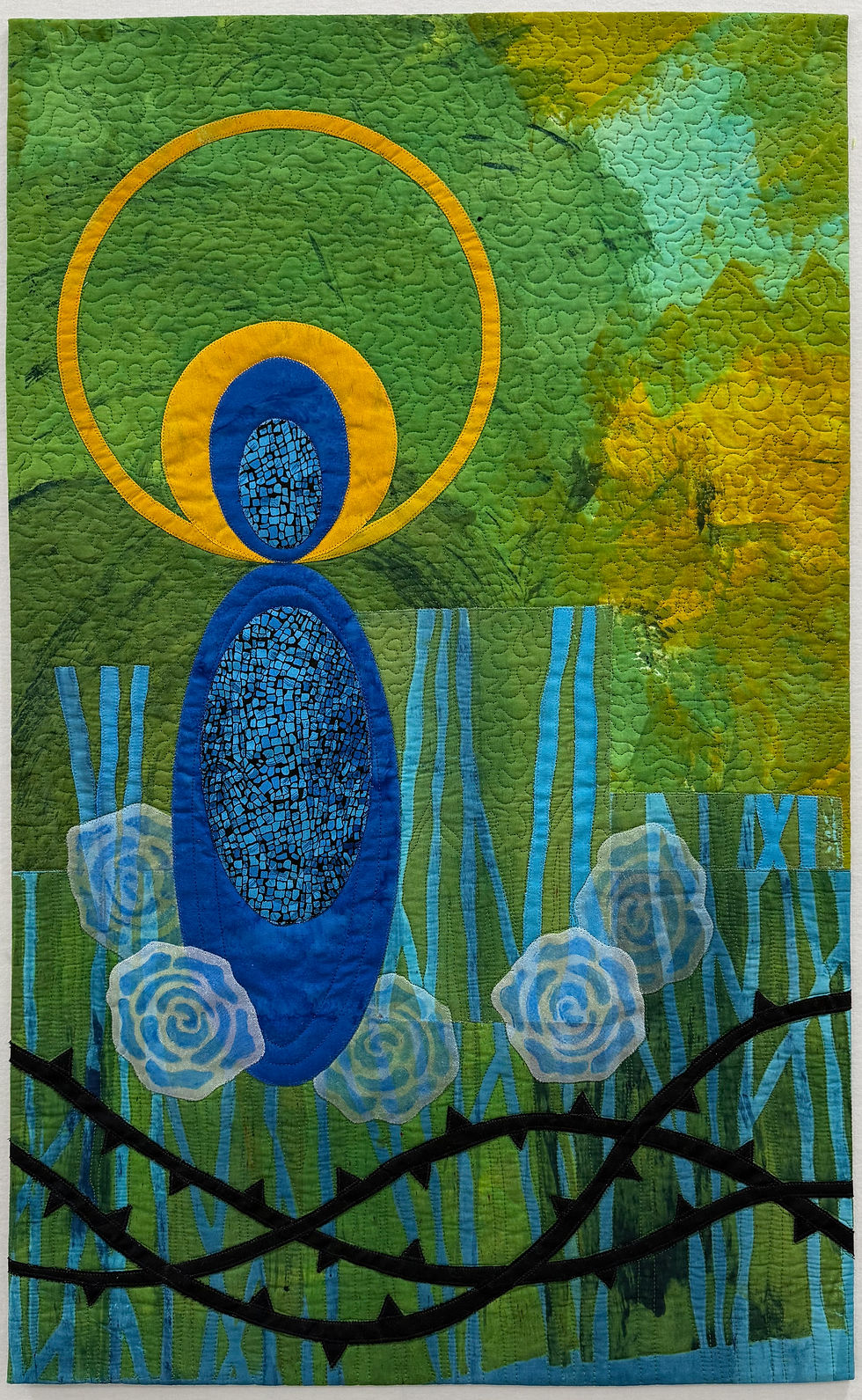FEMINA
- Heather Bennett

- Nov 3
- 2 min read
Challenge # 12
Femina - latin for woman is a very broad topic that we will be focusing on for the next three challenges.
I have decided to focus on how women throughout history have used textiles and fibre arts to communicate messages, in times of confinement, slavery and resistance. Documentation throughout history has shown the use of textiles and fibres arts have been used as a method of recording the current events and sending messages to others.
For this first piece, I have focused on the work of Mary Queen of Scots, who was confined for many years by Queen Elizabeth I. Throughout those years, she spent a great deal of her time embroidering and creating tapestries. One of her most famous pieces was one titled “Virescit Vulnere Virtus”
The Latin phrase "Virescit Vulnere Virtus" means "Virtue flourishes by wounding." Mary, Queen of Scots, used this motto in her embroidery, especially on the Marian Hanging. It symbolized her belief that her royal bloodline would eventually succeed over Queen Elizabeth I’s barren branch. This message, which she sent to the Duke of Norfolk during their marriage plans, suggested that despite her suffering and imprisonment, she was destined to ensure a strong royal succession in England after Elizabeth.

20" x 32"
51cm x 76cm
Using the piece as inspiration, I have recreated portions of that embroidery adding other types of embroidery and embellishment to complete my art quilt. The embroidery and embellishments were inspired by pics of Mary Queen of Scots embroideries. After Mary’s death the panels were assembled onto green velvet wall hangings, and the ones that Mary made were sewn on one hanging which is now known as the Marian Hanging. Mary Queen of Scots was held captive for 19 years under house arrest with the Earl of Shrewsbury and his wife Bess. The other panels, the ones that Bess of Hardwick made, were sewn onto two other matching hangings known as the Cavendish and Shrewsbury Hangings, and altogether these three hangings, are known as the Oxburgh Hangings, because they have been at Oxburgh hall (National Trust property) for many years.







Comments